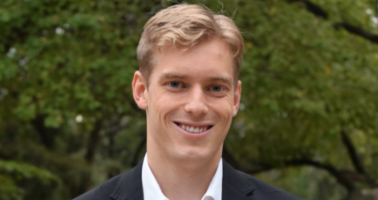Past Event: CSEM Student Forum
Tyler Masthay, CSEM student, Oden Institute, UT Austin
3 – 3:30PM
Monday Apr 25, 2022
POB 6.304 & Zoom
Full-waveform inversion (FWI) is a state-of-the-art method for predicting properties of Earth’s subsurface. By utilizing full waveform information and accounting for nonlinearity of the forward model, FWI can theoretically obtain higher resolution than the current standard of reverse-time migration. However, FWI has a highly nonlinear optimization landscape and is prone to local-minimum trapping in its typical least-squares formulation.
In order to mitigate this local-minimum trapping, Wavefield-Reconstruction Inversion (WRI) was recently proposed, which “convexifies” the optimization landscape by relaxing the constraint of exact equality of the forward model with a given source and is thus the “relax” part of the title. This enlarges the search space, whereby a path that bypasses local minima may be found more readily. A recently published paper by Zhilong Fang and Laurent Demanet has proposed a further expansion of the search space by “lifting” variables in the original formulation to products of those variables arranged as matrices and serves as the “lift” part of the title. In this talk, we give an overview of this approach to FWI and where it may be applicable to other types of inverse problems.
Tyler Masthay is a current CSEM PhD student at UT-Austin working with Dr. Björn Engquist on the application of optimal transport to seismic source full-waveform inversion. He graduated from the University of Dayton with a B.S. in mathematics and computer science in 2017.
Tyler is investigating the use of a modified Wasserstein distance within seismic inversion instead of the traditional least squares approach. He is extending past work with this approach for wavespeed inversion to the different problem of source inversion. One application of this problem is to more accurately find the epicenter of an earthquake from seismograms. His research interests include inverse problems, PDE-constrained optimization, and geophysics.
